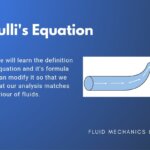Water Treatment plays a crucial role in ensuring a clean and safe water for our daily use. There are two stages in water treatment namely primary water treatment, which primary involves the removal of large impurities and suspended solids, and secondary water treatment which focuses on biological and chemical processes for the removal of organic matter.
Primary Water Treatment
1. Screening
Screening is the first major step in the water treatment process. It involves removing large and suspended debris from the water before it enters the plant. This prevents blockages in pipes and damage to equipment. The most important criteria for selecting a screening system in water treatment technology are the screen opening size and flow rate.
Types of Screens
Bar Screens
Wire Mesh Screens
2. Sedimentation
Sedimentation is the process of removing settleable solids by gravity. The longer the water undergoes sedimentation, the more suspended solids and pathogens settle at the bottom. Suspended solids with a specific gravity greater than water tend to settle down as soon as turbulence is reduced by storage.
Categories of Settling Properties of Particles:
1. Discrete Particle Settling – Particles settle individually without interacting with neighboring particles.
2. Flocculant Settling – Flocculation causes particles to increase in mass and settle at a faster rate.
3. Hundred Settling – The mass of particles settles as a unit, with individual particles maintaining fixed positions relative to each other.
4. Compression Settling – The concentration of particles is so high that sedimentation occurs through compaction of the structure.
Important Terms:
Sludge – Accumulated solid waste at the bottom of the tank/basin.
Settling Tank – A basin where water flow is slowed to allow sedimentation.
Detention Period – The theoretical average time for which water is detained in the settling tank, typically 2-6 hours.
3. Coagulation and Flocculation
Coagulation is a chemical and mechanical process in which coagulants are applied to destabilize particles in water. It involves a reaction between coagulant salts and water.
Coagulation Process Includes:
- In-situ coagulation formation
- Chemical particle destabilization
- Physical interparticle contact
Flocculation is the physical process of slowly mixing coagulated water to increase the probability of particle collision, forming floc particles. Water should be allowed to settle for 15 to 45 minutes for proper flocculation.
Secondary Water Treatment
4. Filtration
Filtration is a physical process that separates suspended and colloidal particles from water by passing it through a granular material.
Types of Filters based on:
➤Type of Medium
➤Pace of Process
➤Mode of Filtering Particulates
5. Disinfection
Disinfection in water treatment reduces pathogens to an acceptable level. It must be capable of destroying bacteria, viruses, and amebic cysts.
- bacteria,
- viruses, &
- amebic cysts
There are different agents used in disinfection:
Common Disinfection Agents:
- Free Chlorine – Chlorine existing in the form of HOCl and/or OCl is defined as free available chlorine or free chlorine.
- Elemental Chlorine – Decreases pH; each mg/L of chlorine added reduces alkalinity by up to 1.4 mg/L as CaCO3.
- Hypochlorite – Contains excess alkali to enhance stability and tends to raise pH.
- Combined Chlorine – Chlorine reacts with ammonia to form various chloramines.
- Chlorine Dioxide – A stable free radical that reacts violently with reducing agents at high concentrations. It has a lower explosive limit (LEL).
- Ozone – A pungent, unstable gas, consisting of three oxygen atoms (O3).
- Ultraviolet Radiation – Generated by electron flow through ionized mercury vapor in a lamp.
6. Aeration
Aeration reduces the concentration of taste- and odor-producing substances, such as hydrogen sulfide and volatile organic acids. It also removes hydrogen sulfide before chlorination and carbon dioxide before lime softening. Additionally, it assists in oxidizing iron, manganese, and certain organic matter.
Types of Aerators
1. Gravity Aerators
Spray Nozzle
Cascades – Water falls by gravity, aiding in iron oxidation and gas reduction.
Multiple Trays
2. Bubble Aerators
- Perforated pipes installed at the bottom of tanks allow compressed air to be blown through.
- The quantity of air consumed per 1,000 liters of water varies from 0.3m³ to 0.6m³.
3. Mechanical Aerators
- Mixing paddles (similar to those used in flocculation) are used.
- Paddles can be submerged or at the surface, such as surface aerators and turbine aerators.
References:
Sedimentation | SSWM – Find tools for sustainable sanitation and water management! (2010). Sswm.info. https://sswm.info/sswm-university-course/module-6-disaster-situations-planning-and-preparedness/further-resources-0/sedimentation
Bonnett, G. (2023, December 13). Water Treatment: Importance & Process. SafetyCulture. https://safetyculture.com/topics/water-treatment/
Kelvinwatertech. (2023, July 29). Primary Treatment of Wastewater. Kelvin Water Technologies Pvt. Ltd. https://www.kelvinindia.in/blog/primary-treatment-of-wastewater/




